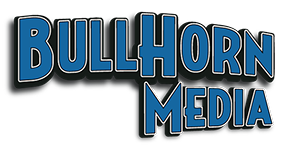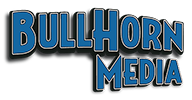The Instructional video is often called a “how to” video for obvious reasons. One of the primary purposes of any business or corporate videos is to create an instructional video. For example, a “how to” video can certainly save time in training employees or giving practical information to new employees. Likewise, you might also create a “How To” video to show your clients how to use your product or service in the most optimal way.
Instructional Video Engages Listeners

A video is the Best Way to Learn “How To” Skills
The advantages of such “How To” videos are obvious. The employee, trainee or customer can use the instructional video at any time, almost any place. They can schedule studying their instructional material at their own convenience.
Plus, learners can start and stop the lessons of the instructional video at any point. And you, as business owner or manager, don’t have to do the repetitive work of the “How to” instructional content over and over.
Instructional Video: A Minor Investment of Time and Skill for a Major Return
With a little investment of time and skill, Bullhorn Media can open a new world of Instructional Video Possibilities for you and your company.
Behind the Business of Giving Instructions
Now, we are not going to turn your company’s basic instructional video into a full-blown cinematographic production. Hey, we promise! However, we must have a plan. That is to say, be sure you know the content of the video, frontwards, backward and sideways. Over-preparation might be the key to an engaging video.
The Bullhorn Behind-the-Scenes Instructional Video Primer
Now, do not let this primer cause you undue anxiety. Thousands of companies, large and small are creating these small video productions every, single day. With a primer, Bullhorn Media can boil it down to one-step-step, one letter, at a time, and we don’t even have to use up the entire alphabet.
Now, let’s take a look at let’s take a look at the gears that run a good instructional video production, no matter what the content of the video might be.
“A” is for Aims:
What are your goals in producing the video? What do you want the watchers to discover and learn?
“B” is for Basic Outline:
Bullhorn suggests you look at the video as if it were a “mini-course,” or class in your topic. This is your course outline. To create it, make some sub-topics and main points which are the main points of your video material. In short, they are the information you want the watcher to learn.
“C” is for “Cut,” and We Don’t Mean “Cut!” in the Hollywood Sense—not Yet.
Now, most of the time our clients have to just about cut that list in half once they have made it.
We are talking about the approximate time of your video. When you focus on your video length, think about putting it in sections of 2 or 3 chapters each comprised of 7 to 10 minutes. Because today’s employees have heavy schedules, we think the mini-sized videos better meet their style of learning.
Advanced students can always complete more than one segment as they study the instructional topic.
“D” is for physical Determinations: Your project members should choose a date, time and location for a little dry run. And let’s add a few w’s to this “D.”

A Dress Rehearsal With Props, Makeup and Costumes Can Sharpen the Production
Practice it (what)
…with an expert presenter from your team (who)
…on location (where)
…and shoot it, even if you only use an iPhone.
…This will give you a hint (why) of how you want your final product to appear.
“D” is also for “Do it.”
Certainly after doing this brief exercise. (Don’t be afraid –we know a few 7th-grade groups that successfully accomplished this assignment.)
Now you can determine more about your budget and crew needs for the actual video. And the more you can put on paper, the better you will equip us to estimate your needs as well as your Bullhorn Media costs.
Your Number One Asset
We rank the “talent” or “presenter” in your video as your major asset. Feed them well and keep them hydrated—just kidding.
But seriously, many good instructional videos have been made with no more than an expert in the content matter and a video camera operator.
You can keep to basic equipment like a video camera, tripod, and microphone. Add good lighting to that mix and you have the possibility of creating a fine instructional video. Ah, yes—we did say “expert…”
“E” is for Expert
Choose someone in-house to speak for your company during your “How to” video.
Your alternative is to consult with Bullhorn; we know some fine presenters involved with many industries as well as performance experience. One of them might match your requirements for a presenter.
In-house talent or outside talent, he or she must be an expert. He or she needs to have definitive knowledge of the topic and an ability to be at ease in front of the camera. The skill to think on their feet is also a wonderful asset, as is a pleasant speaking voice, charm and a little extroversion. We have also seen companies create good video concepts with an “interview” approach, allowing the more experienced speaker to lead and bring out the company expert.
Thus you have A through E for your Instructional Video with more letters from the primer, slated to come in future blogs.
The Overview of a Successful Instructional Video-The Simple 3 Part Formula

So Simple A Child Could Do It.
Think of your video as a pie, and divide it into three parts: Preview, View, and Review. Such are the simple steps of this type of “how to” video.
- In the Preview, you (the company) introduce the speaker and the topic.
- The View includes the Subtopic and all the main points of the content.
- The review is the conclusion, wrap-up, and repeat of the final takeaways.
What Puts the Magic in the Instructional Video?
We have seen very talented speakers that could not hold the attention of an audience. It is critical that your presenter in the instructional video can connect with the learner, lead him, and perhaps inspire him. Remember, your goal is to engage the viewers.
We’ll help your presenter all we can toward this important goal. Needless to say, there are a few more techniques and secrets than we are sharing in this short article.
Post-Production for the “How to” Video
We love the television magic our professional editing can create after we have filmed your “How To” content. Here is a list some of the possibilities for pages:
- We could edit in a little animation.
- Bullhorn suggests we utilize closed captions.
- We always like to add some close-up shots of your presenter and products.
- And sometimes we find a way, to include great file footage from nature or lifestyle video clips.
- We might create some cool custom transitions.
- Often we enhance the viewers experience with a little slow motion, and the list goes on.

A Professional Speaker Just Could Be Your Best Bet
Yes, post-production is a great topic for a later blog, as we have some more tips and hints for companies considering a series of instructional videos.
Just in case you are a small business owner already searching for video tips, here are four of our favorites from the experts at Wistia:
- “Keep it short — jump right into the topic at hand.”
- “Avoid jargon. Try to keep your content conversational.” (We would add that if you must use jargon, just explain it.)
- “Speak directly to your audience. You want your content to feel personal.” (We like to refer to this as engaging your learners.)
- “Stay true to your brand’s voice and tone. Remember you have plenty to say with your content. Your purpose is not to entertain your learners or stray off the topic. Although that could be tempting to the entertainer in you. Most of your listeners long for you feed them their main points. They know it isn’t stand-up comedy.
Thank you for reading the Bullhorn Media blog.


